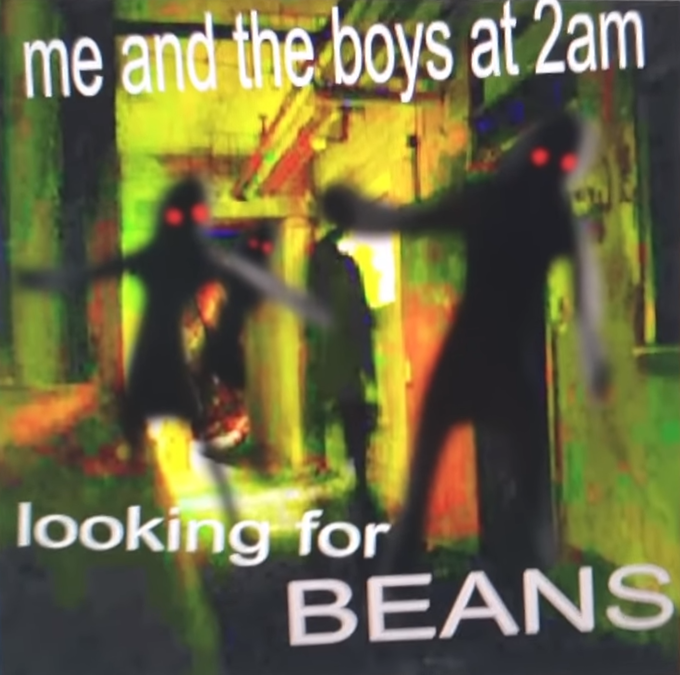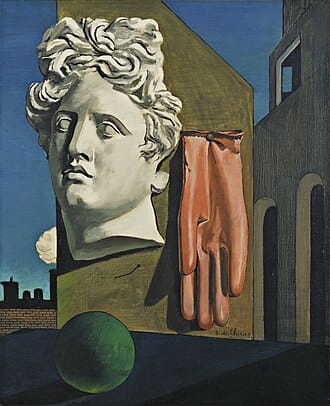My Time With Memes, Part I

I used to scroll through a lot of memes, as in compulsively throughout the day to a degree that was a bit unhealthy. Aside from the occasional spat about politics with people I'd never met, I primarily use social media as a meme feed, particularly of the more angsty or cheerfully nihilistic variety. I've slowed my roll quite a bit after finding less draining ways to self-regulate, though I‘m still curious about what makes meme content so alluring. After perusing Youtube, meme groups, and a book or two on meme art, it feels like the typical discussions about memes tend to pass over the surface experience we have of them in favor of some other focus, be it memes' peculiar modes of production and distribution[1], the usage of a meme as a speech act[2], memes as folk art[3] or as a medium of establishing group cohesion in a particular sub-culture. Put another way, just about everything I've seen written or said about memes centers on something other than the images themselves. That's pretty suspicious! For a genre of material to elicit so much attention that immediately gets diverted into tangential matters, there is likely something either about our interaction with meme content–or perhaps something just deeply ingrained in us–that is responsible for leading things astray.
The meme is, in the first instance and above all, an aesthetic phenomenon. Our immediate encounter with memes is accomplished by simply perceiving them and interpreting their meaning; any account of these images must begin and end with that surface experience. Other ancillary qualities can be attached to the aesthetic core of a meme; a meme can be understood as a cultural product that iteratively grows via an inexhaustible cycle of imitation and variation, as a means of communicating and ratifying a shared set of group norms, or as a vehicle for interacting emotively within a communal space. These other facets of a meme are surely interesting and deserve attention, as long as that attention doesn't come at the expense of meditating on the essence of what a meme is and what it does for us.
Memes Beyond Society
In contrast to viewing memes as necessarily embedded within a social activity and inextricably linked to multiple parties, my interaction with them feels more private. Even with the overtly political stuff, the composition and structural qualities of these images are generally more interesting to me than the ideas conveyed. Admittedly, this might just be a personal idiosyncrasy, though I suspect the socially-oriented view stems from the early framing used to describe memes. The slightly older and closely related label, "image macro," is grounded in a functional conception of the means by which a visual artifact is produced rather than on a description of the resulting image's content or form. It certainly doesn't help that the current standard idiom for identifying such an image, "meme", was hijacked exported from Richard Dawkins' account of the development and spread of "cultural memes," self-replicating cultural units that gradually change over time through imitation, e.g., a melody or catchphrase. That definition has been repurposed to describe the creation and usage of "internet memes" within digital culture[4] (as an aside, I think Dawkins' original point about "cultural memes" was ham-fisted and clumsy, as are many instances of rediscovering the basics of Sociology from people who have never bothered to read what has already been written about it). Dawkins has noted that "internet memes" are distinct from the cultural units of change he originally had in mind, in that the former have been "deliberately altered" rather than incidentally modified via imitation. The intent underlying the alteration of a particular cultural unit may matter quite a lot to someone interested in interpreting memes through the lens of genetics. When observing memes on their own terms as aesthetic artifacts, however, it's plainly a distinction without a difference. That goes doubly so for an analysis of memes as "in-jokes" or as vehicles for building group cohesion in a sub-culture (more on that below).
For a similar take, consider the proposed definition of a meme from Limor Shifman:
Instead of depicting the meme as a single cultural unit that has propagated successfully, I suggest defining an Internet meme as (a) a group of digital items sharing common characteristics of content, form, and/or stance; (b) that were created with awareness of each other; and (c) were circulated, imitated, and/or transformed via the Internet by many users. This definition is helpful for analyzing Internet memes as socially constructed public discourses in which different memetic variants represent diverse voices and perspectives.[5]
I mean, sure, but what does that tell us about the arresting content and development of particular families of images as regards their visual idioms and properly aesthetic qualities? The producer, distributor, and viewer together have supplanted the images themselves as the focus of an analysis ostensibly aimed at defining the latter. Couldn't roughly the same thing be said for any creative art in general, provided mentions of "Internet"[6] and "digital items" were swapped out for some other medium of expression?
This shift away from the surface meaning of the image towards its cultural accretions degrades the meme both as an independent thing as well as the meme as a cultural product. It's as if fascination with the dispersion of light into a patch of distinct colors and a study of the original light source left no time to observe the intricate structure and austere hardness of the crystal prism where all the real work is being done. Are we to believe that a given "cultural product" retains no distinct essence of its own and is merely an aggregate of the conceptual forces guiding its creation fused together with the length of the shadow it casts back onto that same culture? In that case, there isn't much of a coherent "product" at all to discuss if its inner content is diminished so severely in order to make room for reflection on the overarching trends or patterns that precede it; all the more so regarding a meme going "viral" and what that entails (or doesn't) for our grasp of the meme by itself. I'm aware that this account of meme discourse borders on caricature; still, I hope there is something in the ordinary approaches to making sense of how memes behave and what we are to make of them that is recognizable here.
In-Jokes, Folk Art, and Gen Z Nonsense
Taking a step closer to an understanding of memes as aesthetic objects, some analysis concerns itself with spelling out the various cultural subjects or tropes that appear in memes from specific communities and sub-cultures, for example, explainer videos for group in-jokes.[7] The insights offered and the examples discussed aren't exactly high-brow; these sorts of explainer videos are worthy of mention since they're one of the few examples of people taking a stab at developing a thorough understanding of the content in particular memes and meme templates. The downside of this procedure of unmasking the relatively esoteric cultural minutia in a meme is that it treats the meme as an empty cipher drained of any essential content distinct from the external details that constitute its subject matter. As with the interpretation of memes as primarily units of transmission for cultural change, the meme is treated in explainer videos as an empty vehicle for some other cultural idea to which it can merely point or refer.
We can find a blend of the two aforementioned approaches in the critics who frame meme culture as a “folk art”, which emphasizes the fact that the people who make and develop memes do not think of themselves as "artists" in a professional sense and that memes are rooted in the traditions of an identifiable community, serving as the handmaids to the establishment and expression of a group's culture. Schifman offers a related note about a form of "postmodern folklore":
...Internet memes can be treated as (post)modern folklore, in which shared norms and values are constructed through cultural artifacts such as Photoshopped images or urban legends...I show how postfeminist ideas about gender differences are circulated globally through Internet jokes, and how critical approaches toward race-based stereotyping are reflected in visual memes. Whereas a single meme may rise and fall as quick as a flash, revealing the common ideas and forms shared by many Internet memes might tell us something about digital culture.[8]
Note how the fact that memes "tell us something about digital culture" takes priority over what they tell us such that the latter isn't spelled out here beyond a few highly generalized and abstracted philosophic insights that originate mechanically from elsewhere and only make a sojourn through the world of memes as an efficient vehicle of transmission.[9] Is the sphere of meme creation and distribution not fertile soil capable of growing its own novel insights or discoveries that are unattainable in other domains? Even the term "folklore" or "folk art" has a condescending air to it, as if the aesthetic norms and values holding a culture together are no longer something to be taken seriously or real in their own right and are relegated to merely providing a conduit for the circulation of conceptual ideas developed though some other external activity.
Memes break out of the defining constraints of “folk” art, inasmuch as the latter are by definition tied to the customs and norms of a specific community and are often embedded within some practical usage or other, e.g., home decor attached to social spaces. There is a more insightful branch of memes that aspires to something universal in its apprehensions and curiosities while shedding any direct link to a definite community, e.g., expressions of disorientation and anxiety about death, a creeping sense of ennui stemming from modern urban life, or an experience of being ill-at-ease in one's own skin for reasons that remain undisclosed yet unmistakably present.
Less charitable meme analysis abandons any attempt at grasping a meme’s inner meaning and dismisses it as “nonsense,” especially in the case of Gen Z and latter-day Millenial branded content. I swear I saw a video essay (it may have been an article) that used the below image as Exhibit A for why contemporary memes are often driven to the point of absurdity. I can't dig it up at the moment, so you'll have to take my word for it.

It's feasible at first glance how this grotesque image can be thought to have abandoned any pretense at expressing something meaningful. The text and associated image only loosely hang together into a coherent whole, and that whole is not terribly illuminating. Another video essay includes a brief segment on this image and unsurprisingly outlines the various tropes and thematic material contained within it, while offering only scant remarks concerning the experience of the final product.[9] That particular section is part of a longer discussion about how Gen Z's irrepressible drive for edgy cool kid's clubhouse status leads its culture into extreme forms of absurd humor in a constantly escalating game of one-upmanship; the following section of the video explores Gen Z's declining mental health as another possible factor for these cultural trends. Gold Star for trying to dig in to the meaning behind this content! Still, it's a lazy rehash of the all too common attempts to explain away contemporary culture rather earnestly approach it on its own terms.
A more fruitful way to engage with images like the above is to view them impressionistically and tarry with the mental space they conjure. The self-described monstrous forms in the image threateningly pursuing "beans" seems like an apt characterization for the kind of beastly hunger and eating one normally does at those hours; the oversaturated color palette and distorted artifacts in the low-res image contribute to a sense of unruliness one may encounter late at night outside the stabilizing light of the day. That frame of mind is very much not peculiar to contemporary memes. All the unhinged stuff happens at night in classical theater and opera. Far from even being "weird" and nonsensical, this mood is relatable, or at least it should be. Notice how the only external media mentioned just now is by way of comparison and doesn't bear any direct relation to the production of the image or its thematic content? If you put down the cultural genealogy for all of half a paragraph and focus on the proximal experience of the meme, things start to make a good deal of sense. We could follow this up with more questions about why these particular visual tropes and forms are used to convey this sort of experience, and that's quite useful! Even so, those questions are far removed from the task of winding our way through the various iterations of these themes as they develop over successive generations of alteration, distribution, and usage, as is commonly found in explainer videos and other meme analysis.
Even the more baroque and fantastical memes are quite accessible as long as the focus remains on the internal state these images evoke, all the more so if the full range of our possible moods and attunements is allowed to show up and be recognized. In that regard, there's not much difference between contemporary meme art in comparison to other times and places.
Consider this unsettling meme from a while ago.

Except that's not a meme. It's an Italian painting that's over a hundred years old.[10] People make unsettling and provocative art. They always have and always will. The only thing truly distinct about contemporary meme art is the stubborn insistence that this time, the playful activity behind its development is more interesting to ponder than its concrete visual material. On the other hand, I'm pretty convinced that memes rise to a higher level of interest than graffiti, doodles in textbooks, or zines, owing entirely to the sheer scale of collective effort that becomes possible to coordinate via social media and digital production tools. If there's anything to be said about the social and cultural factors behind memes as a distinct art form, it's that our contemporary technological and social fabric unlocks an unprecedented amount of creative labor and iterative aesthetic development that simply isn't possible without that body of supporting infrastructure. It's not so much that cultural trends are merely refracted through memes as an empty vehicle or that algorithms are making us all chase further extremes of absurdity; rather, digital memes enable a radical escalation in a culture's capacity to delineate its moods and experiences into distributable artifacts that can then be refined and tuned at a rapid pace.
A Small Example
Take for example the common “The What” meme template.

Rhythm and motion are used to fashion a simple, linear narrative across the smallest distance possible, two distinct frames. Splitting up the image into linear frames is reminiscent of a basic comic-book format which enables a highly economical form of expression that is straightforward to create and digest. In this particular case, the arresting force of zooming in together with the unsettling tone of the second panel are exploited in service of of the attached epigram, adding surprise and drama to a silly reference about an internet-organized effort to storm Area 51. The image recycles a cropped and dated advertisement for a rug vacuum into a new artistic product both by means of its composition and the attached epigram. I mention those two details neither to wholly dismiss them nor to make of them the central focus for analyzing the image. If we bracket out those mechanical and external details, the essential core of our experience with the image would remain, albeit in a less rich and vibrant manner. The image would still look like something from a dated advertisement, and the epigram would retain a playful and melodramatic tone. The point is to see how the incidentally supplied cultural details enhance and draw out the mood implicit within the meme instead of serving as mere ornament to a statically defined template.
What is striking is not the trite observation that a scavenged corpse of late-stage capitalism can be refashioned into an art form that serves the people who find themselves caught up in that environment but rather the cautious curiosity, bordering on enthusiasm, for the cultural media that surround us. The image is not merely treated as dead starting material to be molded and transformed into something entirely new. The flattening out of the first panel to the point of distortion by zooming in on the woman's face, intensifying our focus there, both makes the minute details of the original image more obtrusive as well as highlighting an element of uncanny tension and anxiety. This sort of everyday background tension that the surface image was meant to disperse, via a reassuring message about the ease with which a messy rug can be cleaned, has been snatched back out into the foreground. One function of the meme is to reveal something about its starting material that exists prior to the meme forcing us to take a closer look. Here we find a free and cautious exploration of the world as we proximally encounter it in mundane and sundry experiences, without judgment or dismissal. Via this sort of curiosity we may simply allow ourselves to be caught up in the visual forms presented to us by our own culture world, even beyond the confines of what the discovered material was originally intended to offer. The meme leads us back into the world and shines a light on a part of it that remained hidden and obscure before. Further, it becomes possible to rediscover our own moods or internal experiences reflected back in what is illumined. The uncanniness and unease that the zoomed in frame presents isn't too far from feeling overwhelmed or out of place in a world full of disembodied figures contorting this way and that in the service of buying various items. In effect, the viewer feels and recognizes herself and her attunements in the mood elicited by the image.
That's quite an odd result, given that the meme's alteration of its source material is an act of abstraction and displacement. The viewer attains a heightened awareness and consciousness of the advertisement as a visual artifact whereas before it was simply a schlocky attempt to lure us into making a purchase. We no longer simply enjoy or drink in the scene; it is something to be modified, critiqued, or wondered at. The point where the surface activity of the ad is suspended and the aesthetic artifact itself becomes the central concern constitutes an assault on the image as it is first given to us in experience. The movement of first abstracting away from the ostensible aesthetic and commercial functions of the ad for the sake of isolating and subsequently transforming its material is conditioned by a certain rejection of the initial encounter with the image. Instead of feeling a sense of harmony and connection with the ad, the meme creator (and distributor) presumably finds great displeasure in their own impression of the image and negate that impression by substituting it with something else.
Thus, there is a dual movement when we encounter the meme, both a drive to abstraction that supplants the initial experience of the image and a leading back to the world as we find it through a heightened inspection and scrutiny whereby we allow ourselves to become submerged in this content and recognize our own internal states within it; the movement can be both a violent dismissal as well as an intimate acceptance of a small fragment of our shared cultural world. I'll pick up this thread in a follow-up Part II to this piece.
I hope today's memes treat you well.
- See this deliciously over-studied article on the distribution and circulation of memes
- Meme Life is a decent overview of memes as a speech act and other considerations from communication theory.
- A random Linkedin post about memes as folk art
- Internet Meme Culture a TED talk on memes
- I found that particular quote in a review of Shifman's book. A pdf of the entire text can be found here.
- It is really cute that they capitalized it.
- Lessons in Meme Culture and Behind The Meme are representative of this sort of thing.
- See the above link to Shifman's book. Granted, this is just a summary but I stand by my point.
- Why is Gen Z Humor So Weird?
- The Song of Love by Georgio de Chirico